Encounters with a Few Million Residents
Zocalo, Paseo de la Reforma and Chapultepec Park
![]()
On our first longer exploration, we found quite a few of the 18+ million folks who live in the region!
We walked to Monumento a la Revolucion, where a carnival was being set up on the surrounding plaza for the holiday season.
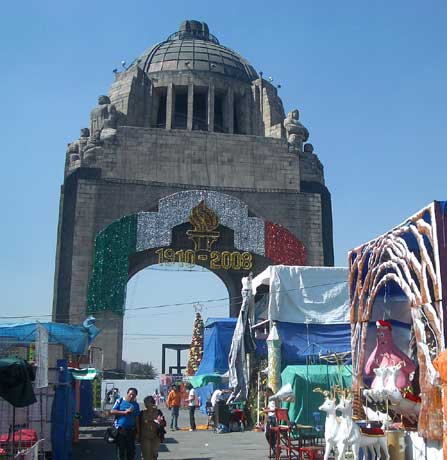
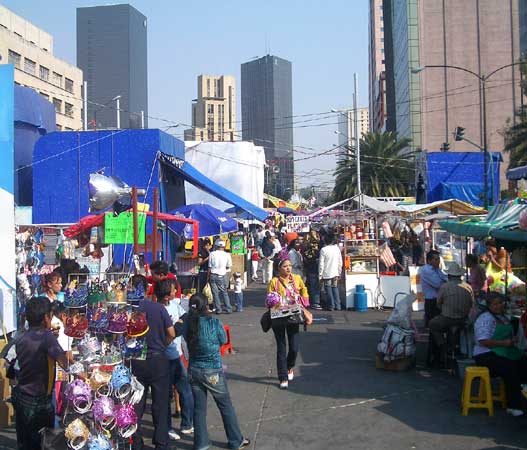
We then continued on to the Alameda, a formal park just west of the historic district, where all of the walkways were lined with stalls selling food, sweaters and other clothing, CDs and DVDs, and more (below left). At a small amphitheater in the middle, a choir was singing Mexican songs, so we joined the audience to listen (below right).
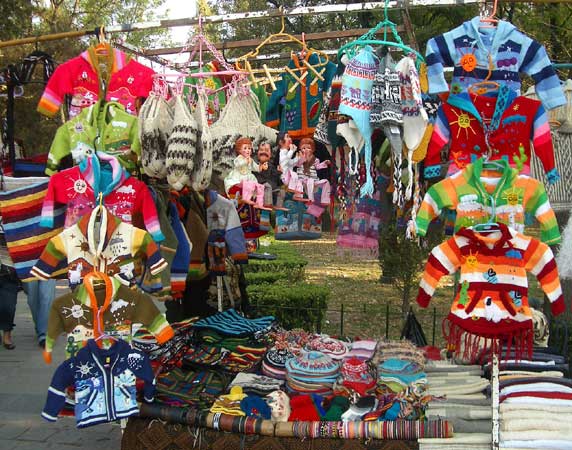
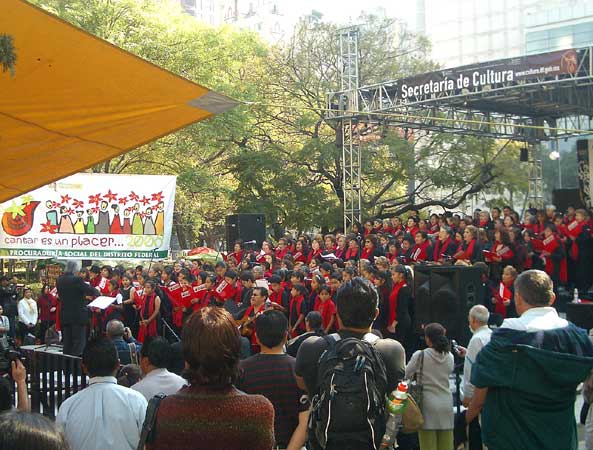
At the east side of the Alameda, stood Belles Artes, the grand art nouveau building, in a wide plaza now filled with even more people.
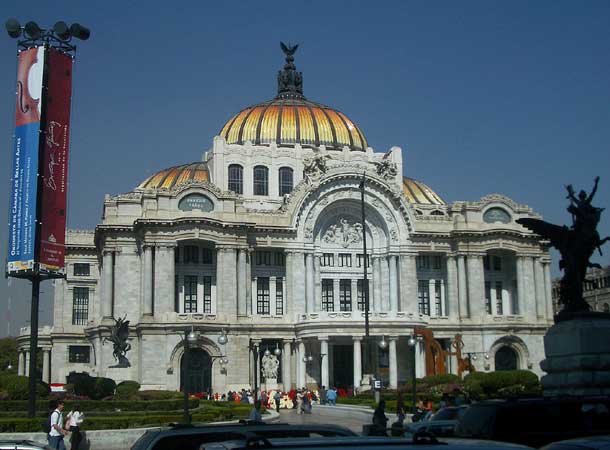
From this point, the crowds thickened as we proceeded towards the Zocalo, a vast paved open space, one of the largest city squares in the world. Today it was filled with people, at least 10s of thousands! These folks had come to celebrate winter even though the temperature was 25 degrees Celsius! In a large tent, kids were making snowmen out of artificial snow, and nearby, a snow packed hill offered Mexican children the thrill of snow tubing.
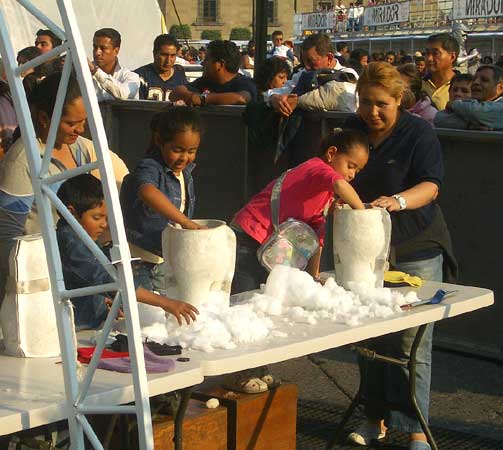
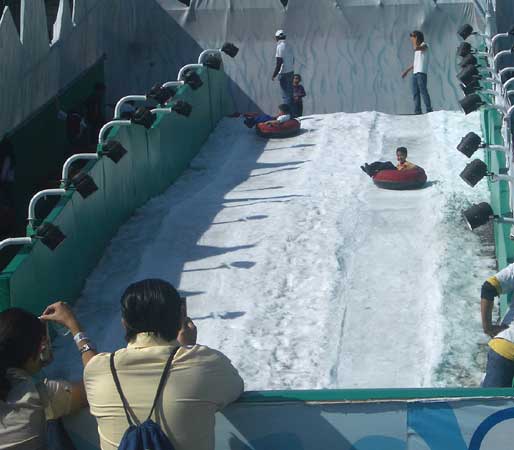
A really large ice skating rink filled the center. All around the rink were viewing stands so we joined a que to view the skaters - some doing well but others clinging nervously to the railing and sliding gingerly along.

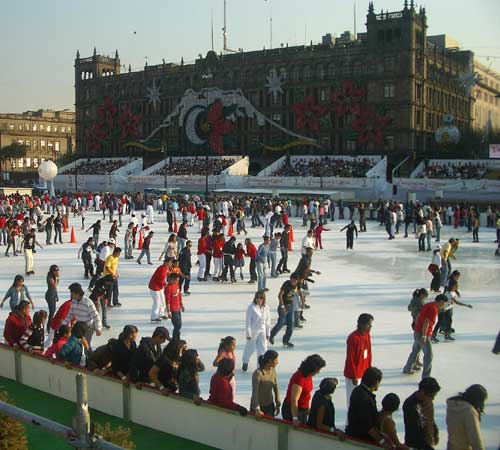
After this, we headed to the vast Cathedral Metropolitana to examine the Baroque and Neoclassical exterior and the monumental interior spaces with gilded wood altars, side chapels and grand dome.
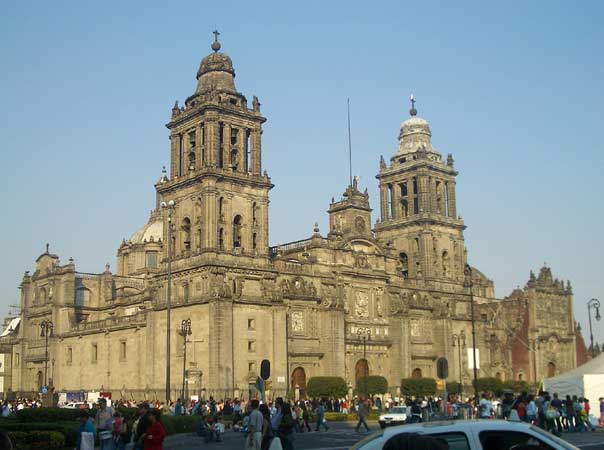
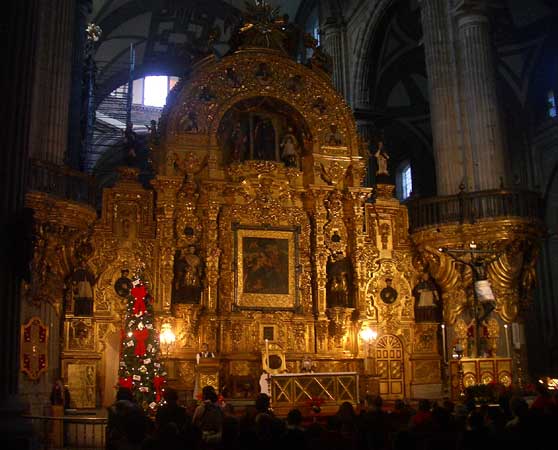
The Palacio Nacional, classic colonial but rather austere, filled the east side of the plaza. Across the street was the huge National Christmas tree, respendent with it's gold decorations and gold angel at the top.
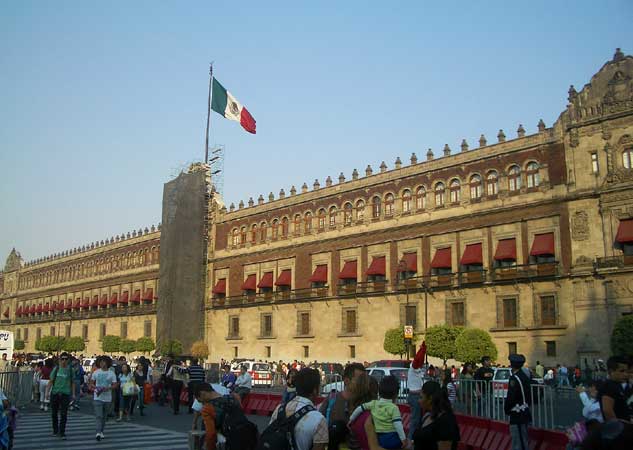
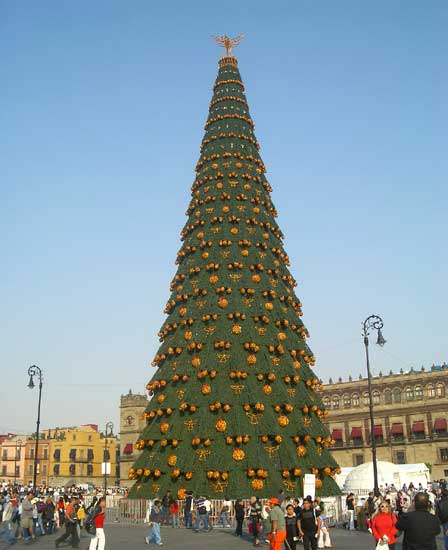
At the side of the cathedral were Aztec dancers and priests blessing people with smoke, invocations and drumming. Nearby was the Templo Mayor, the ruins of the ceremonial area of Tenochtitlan, the ancient city that flourished beginning in the mid 1300s. We vowed to return after rush of the holiday crowds subsided.
This was Saturday, the first day of the Christmas vacation. We were enthralled to see that so many folks of all ages had come to enjoy these activities; there were families and groups of friends, all locals or, perhaps, folks who had come from the surrounding towns to join the fun. Everyone was smiling except for a few tired small ninos.
The next day, Sunday, we discovered that from the intersection with Avenida Insurgentes to the edge of Chapultapec Park, all automobile traffic along Avenida de La Reforma was diverted out of the main traffic lanes, thereby giving bici (bike) riders, joggers, strollers and dog walkers free reign! There were even 'Estacion de Servicio' (bike repair stations) set up to help the bikers should they need repairs or air for their tires - very enlightened, we thought.
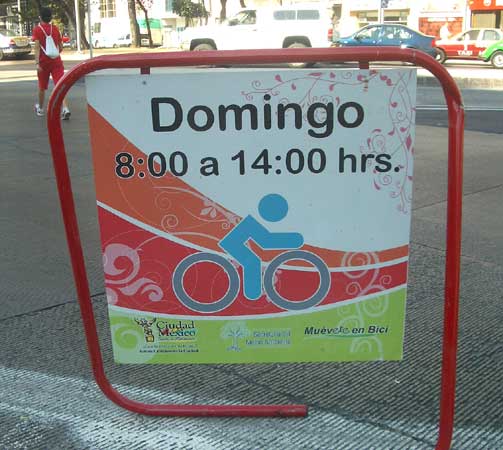
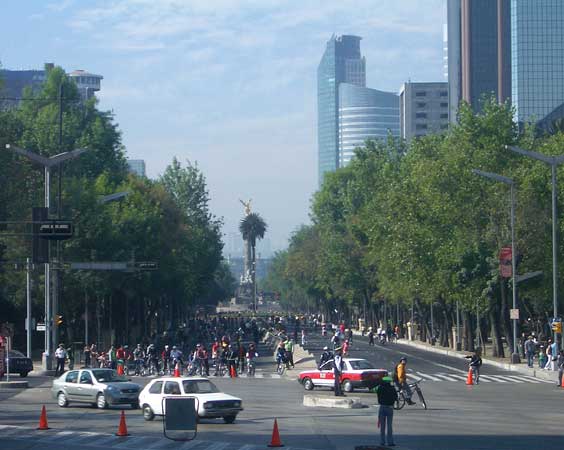
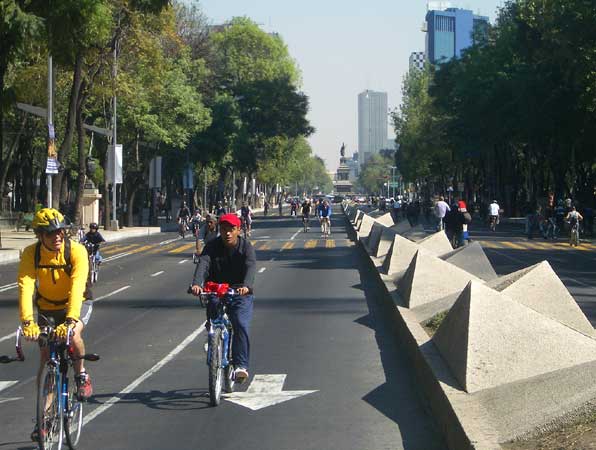
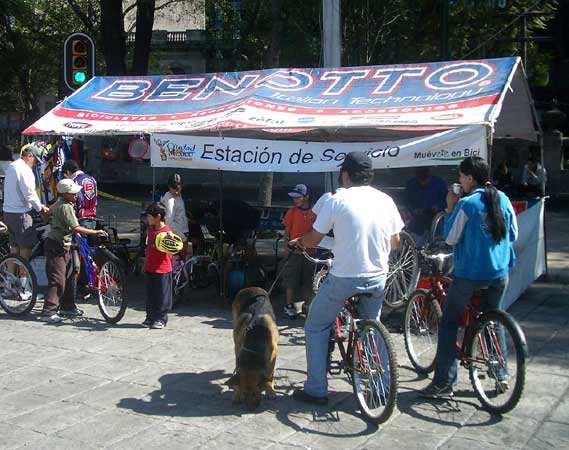
Watching the bicyclists enjoying their rides and wishing to stay out of their way, we walked on the sidewalk in the shade of great trees, admiring the many 'sidewalk' sculptures offering a place to sit and rest.
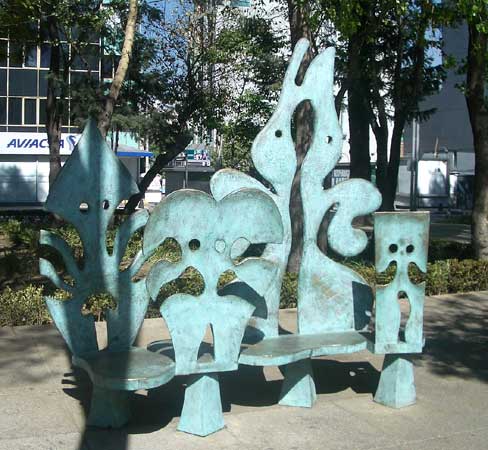
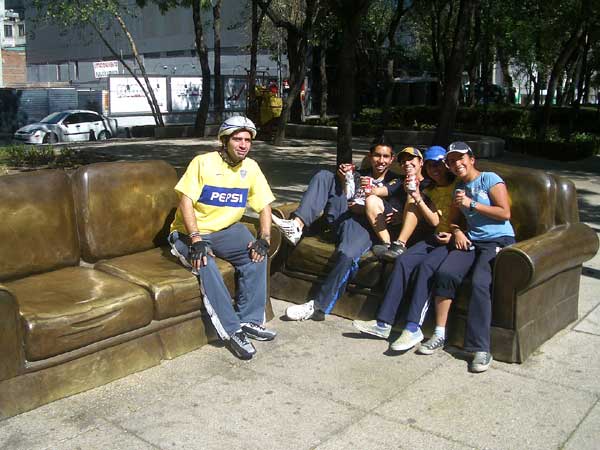
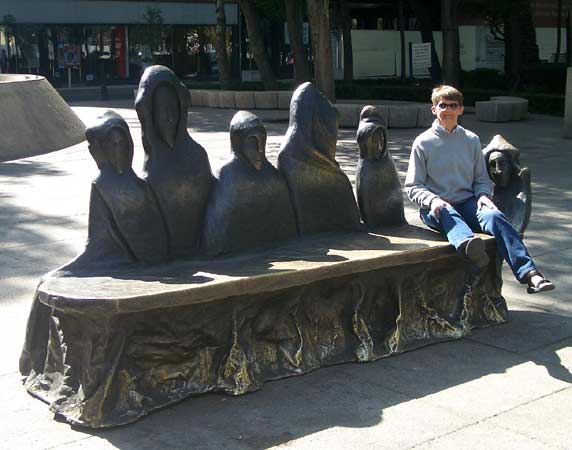
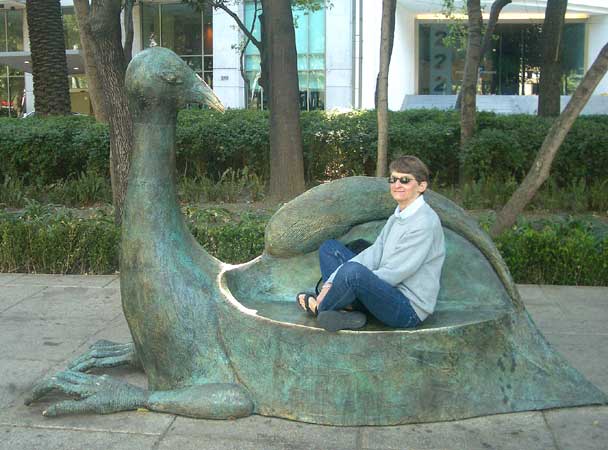
Intermixed were Navidades (Nativity Scenes) in honor of the season, some traditional and others more whimsical. We learned that the Baby Jesus is added on Christmas Eve, as the biblical story might suggest.
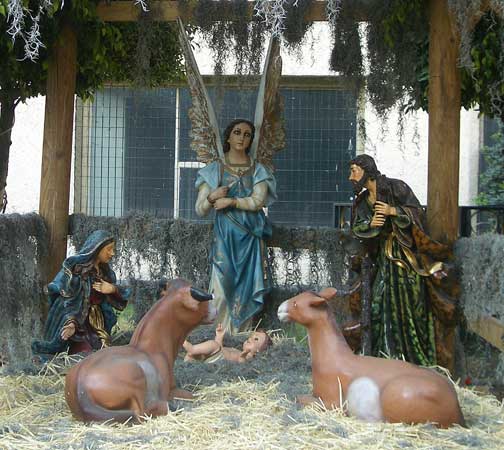
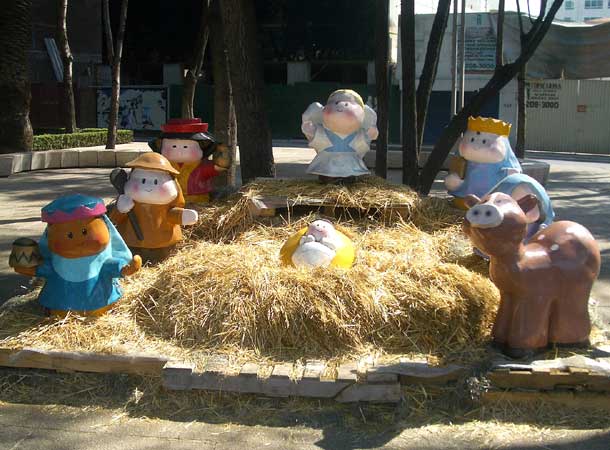
Further on, we encountered the Festival de la Lectura, a collection of many stalls of booksellers. We browsed, searching in vane for titles in Ingles, and settled for post cards, a CD of Mexican music, and a cafe con leche!
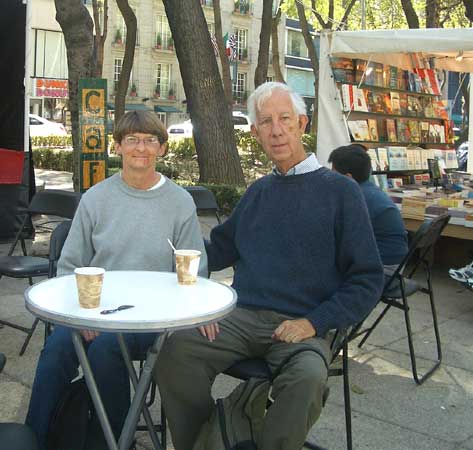
As we walked, we admired the wonderful scenes up and down this grand avenue.
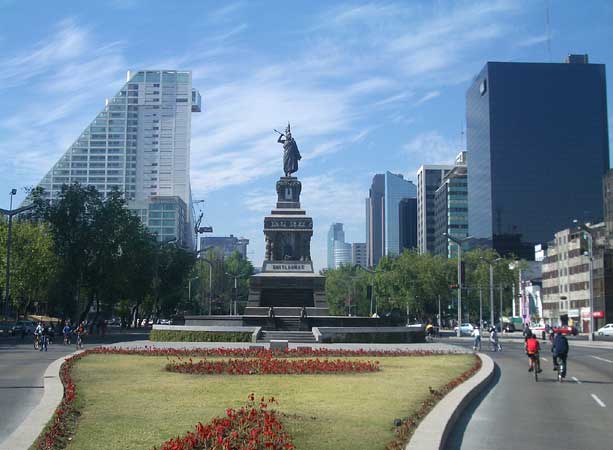
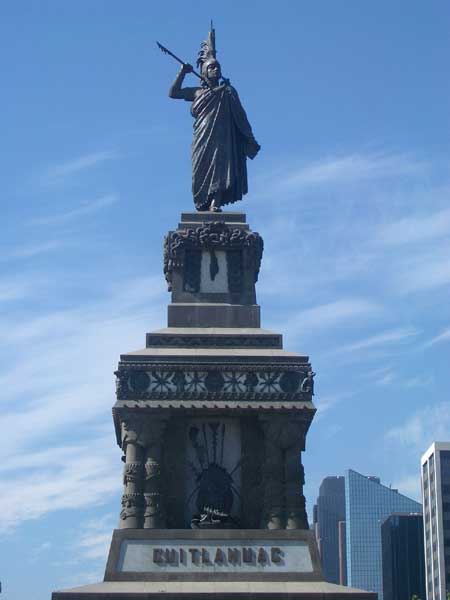
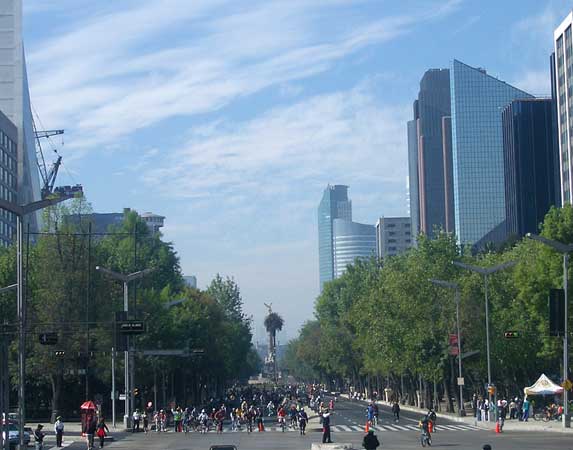
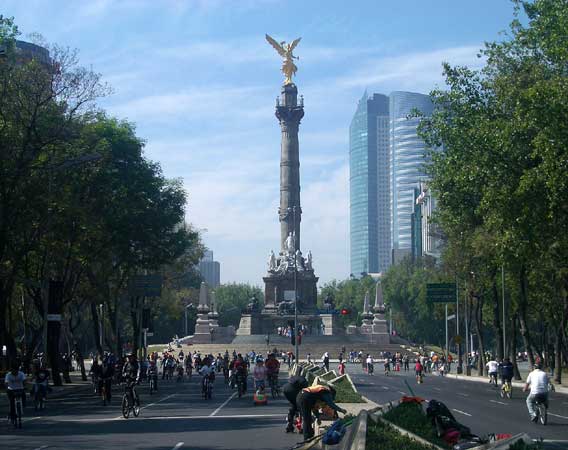
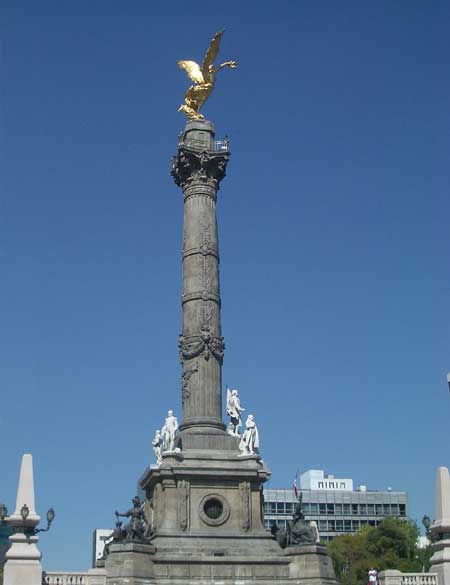
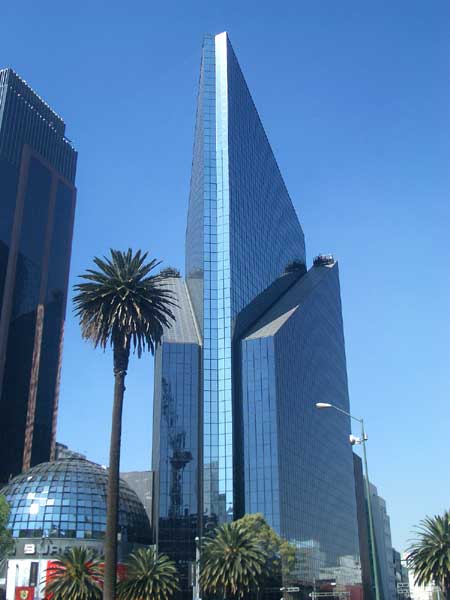
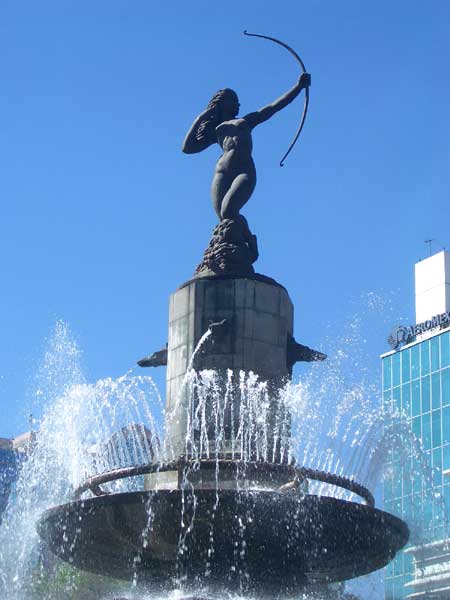
To provide a bit of history, Paseo del la Reforma was cut through the city by Emperor Maximillian in the 1860s, a grand boulevard to rival those of the great European capitals. It was conceived as a ceremonial drive from the Maximillian's Castle in Bosque de Chapultepec to the centre of the city and to provide a focus for development of the growing metropolis. The glorietas (roundabouts) at the major intersections each feature a monument to celebrate an aspect of Mexican history.
Our walk along Reforma brought us to the Chapultepec Park, the vast green park of about 1000 acres in area, that provides a natural world connection for residents. Within the park are acres of forest, great old trees, the lagos (lakes) for boating, the Zoo, sports fields, gardens, and several of the greatest museos including the Museo National de Antropologia, and the Museo National de Historia, housed in Maximillian's castle on a rocky outcrop. We walked through the park, joining another million or so residents, found a shady bench and sat to read and people watch.
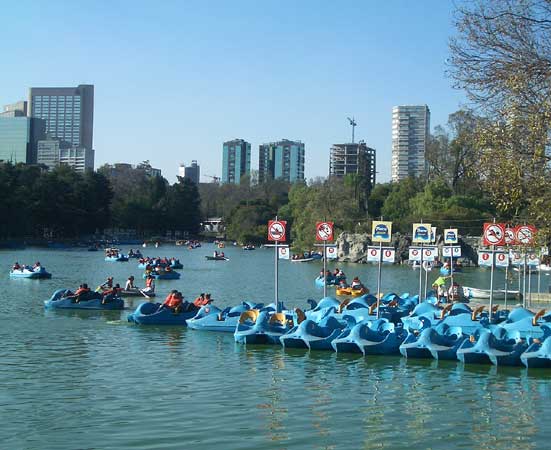
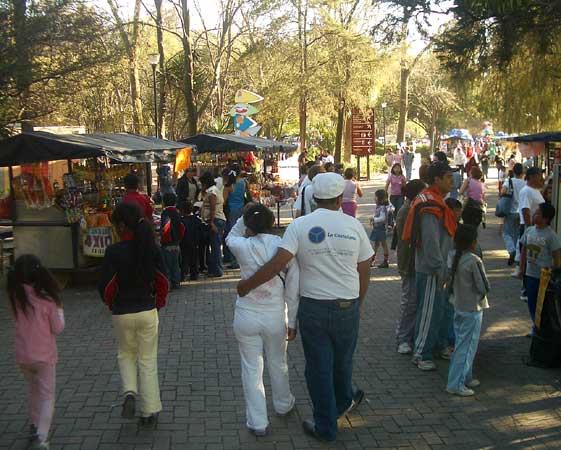
As foreign tourists, we felt welcome and comfortable among all of the numerous folks. We were welcomed by cold drink vendors, who seemed pleased that we had picked their shop. We saw very few other foreign tourists, a situation that made us feel very special, indeed!
Click here to return to Our Moving on to Mexico - Winter 2008-2009 page
![]()